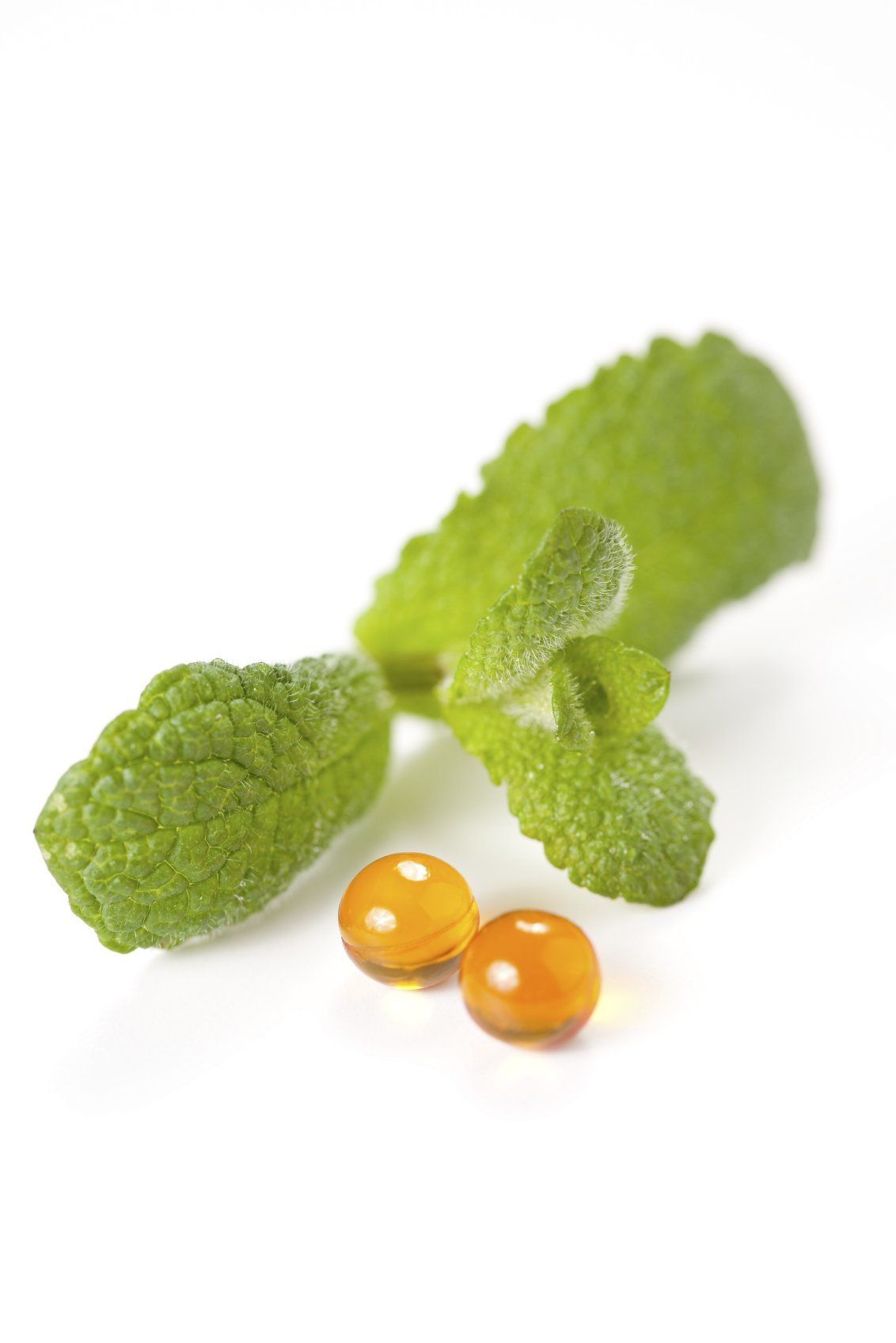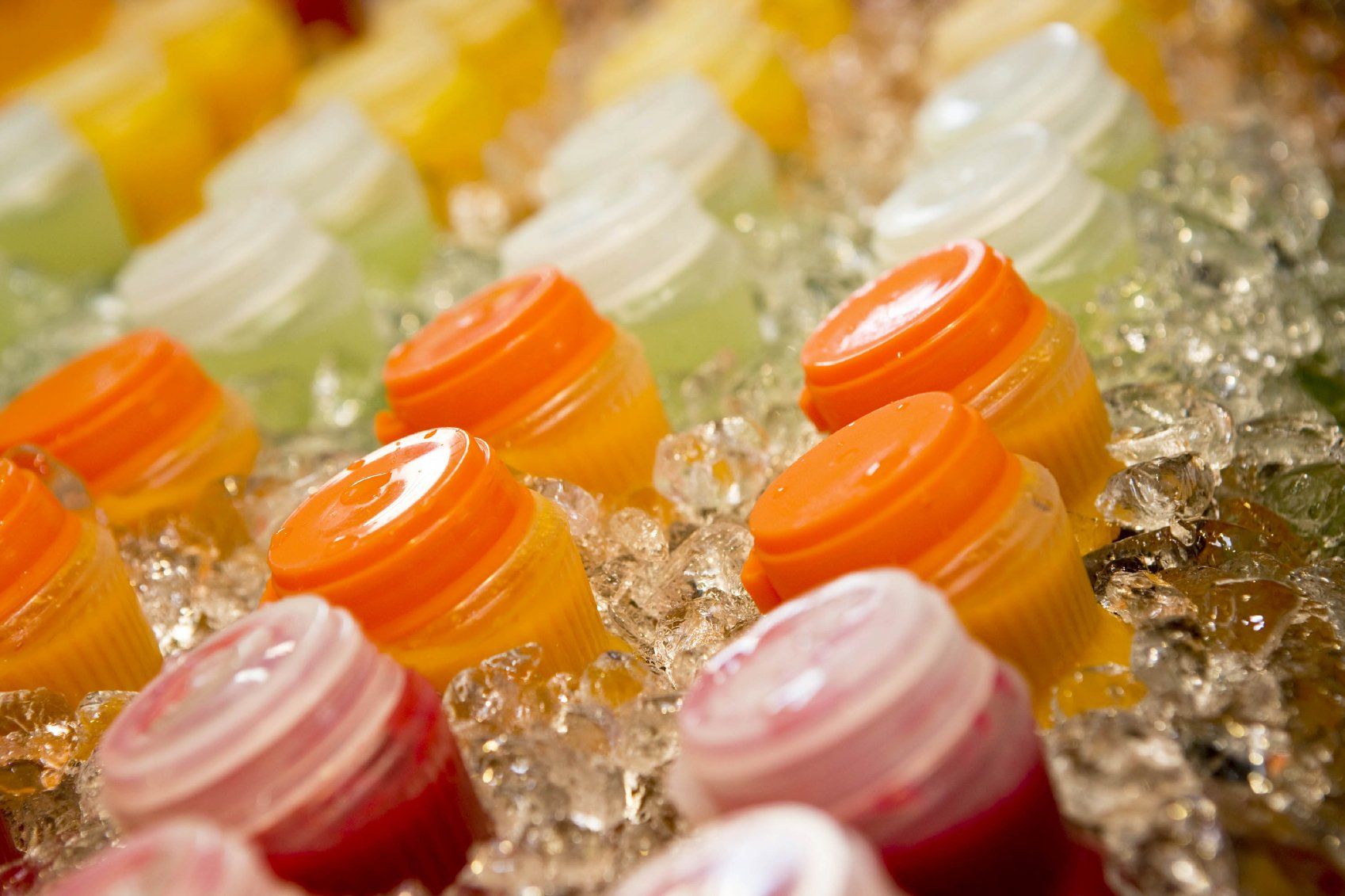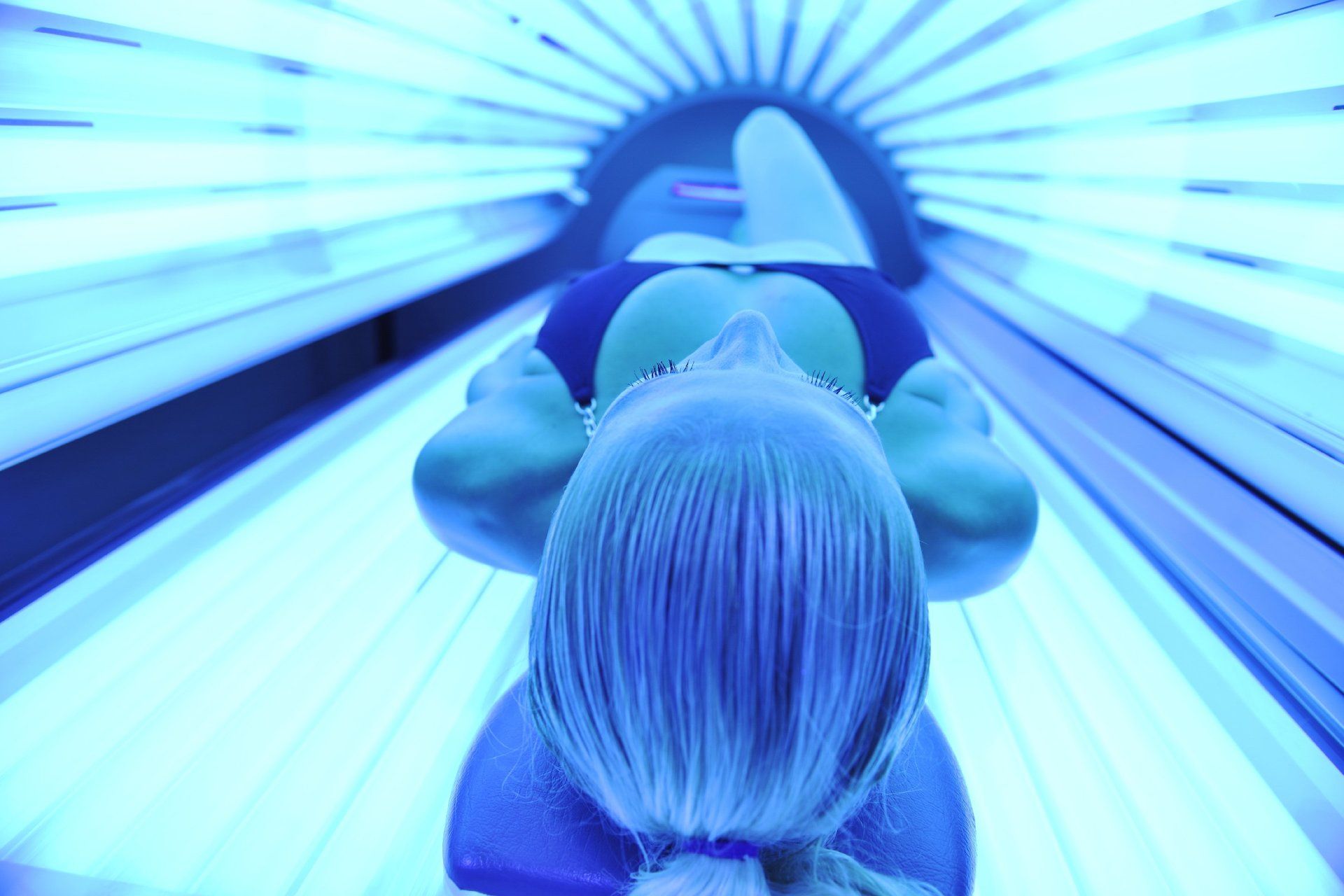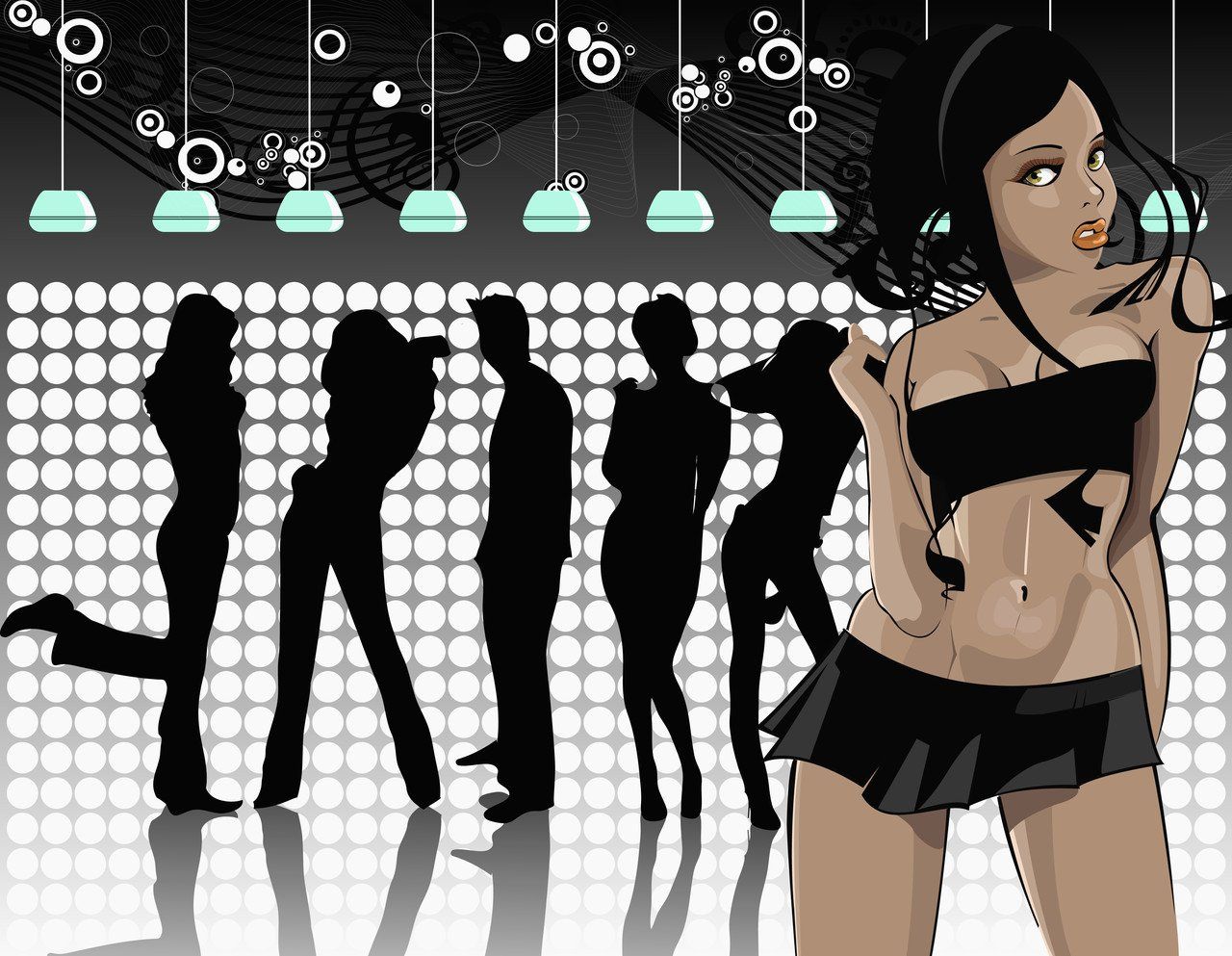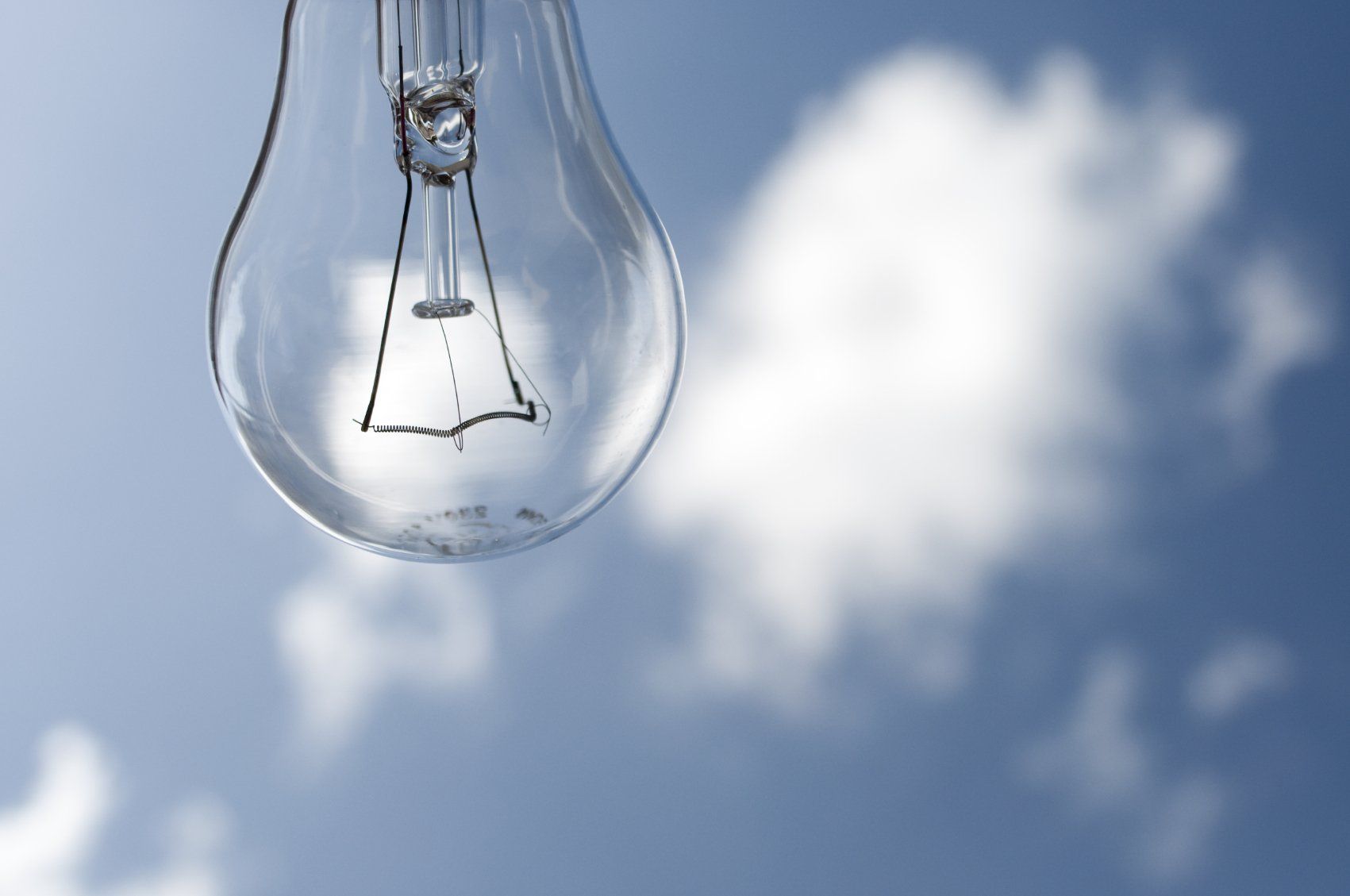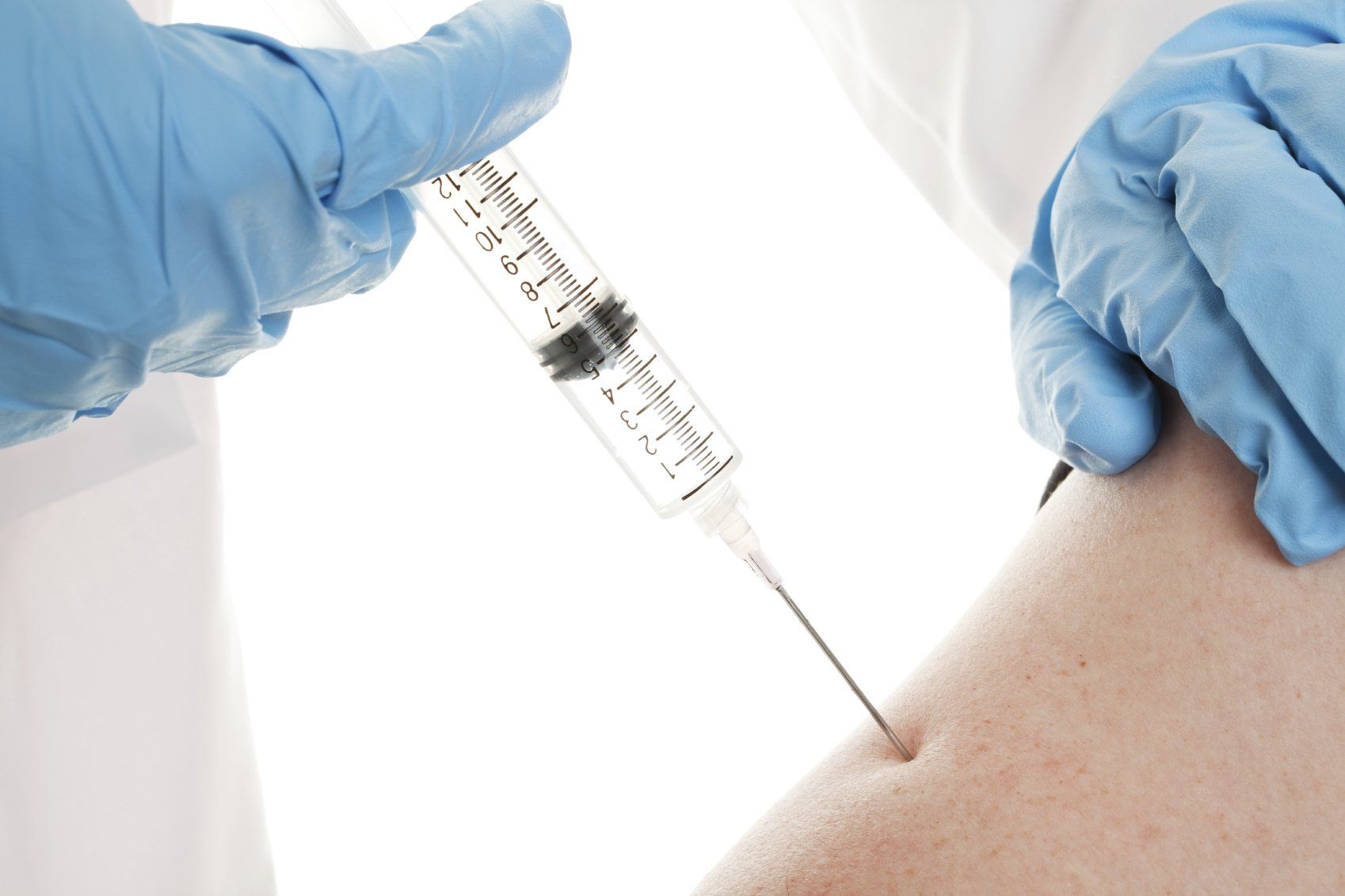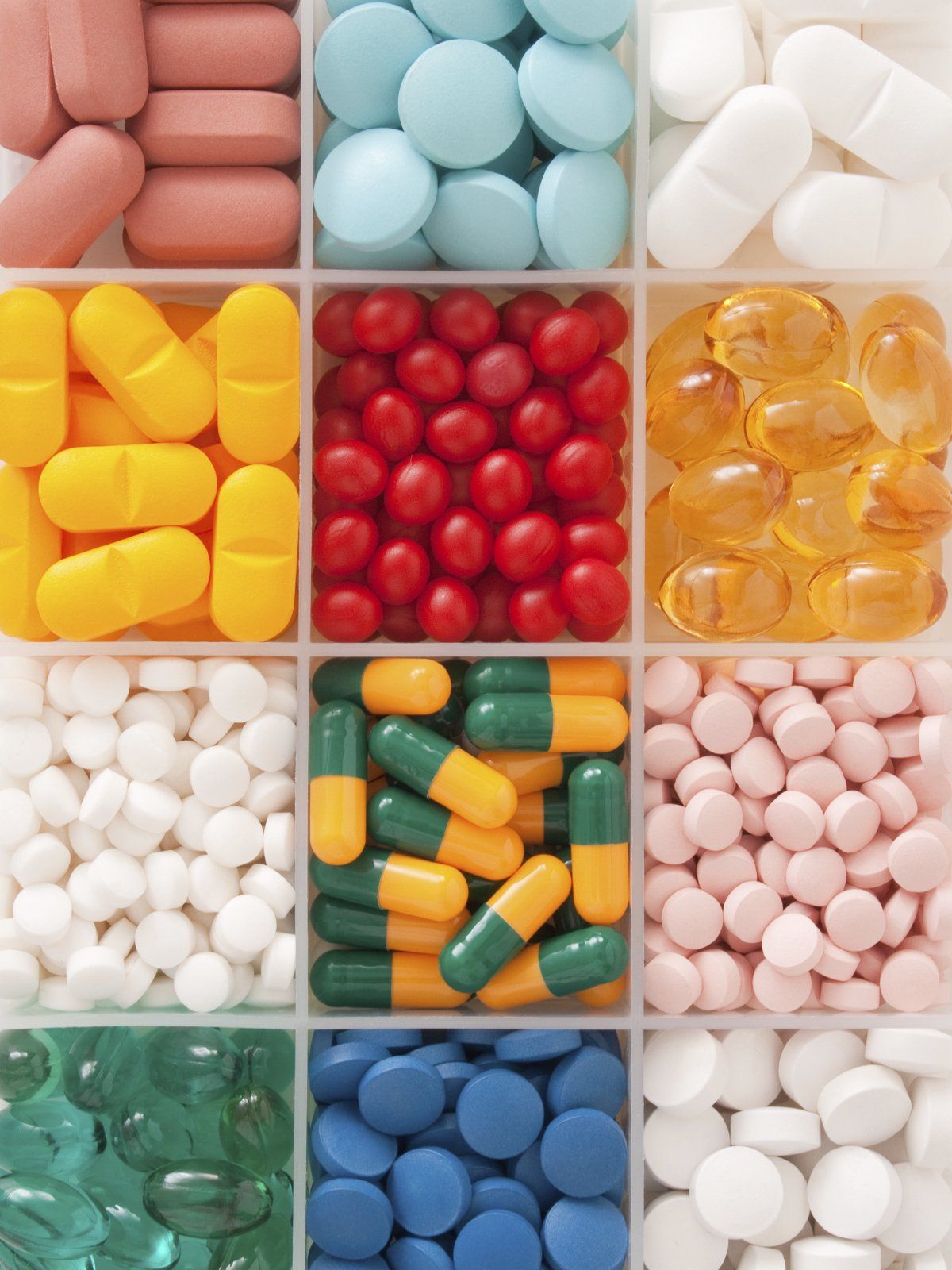Practice Dr. Katmer
Statutory health insurance patients - private patients and self-payers
Traditional Medicine-Naturopathy-Complementary Medicine
Naturopathy
Naturopathy, formerly also called physiatry, is a form of medicine that is based primarily on dietary and physical remedies, places particular emphasis on a natural lifestyle and (apart from medicinal plants) largely avoids the use of pharmaceuticals.
The term naturopathy thus refers to a spectrum of different natural healing methods that do not use technological aids and are intended to activate the body's own ability to heal itself (spontaneously). To achieve this, these methods primarily use natural remedies or stimuli.
Naturopathy is also often used to describe areas of alternative medicine and, in a narrower sense, parts of complementary medicine (i.e. those procedures that are not scientifically recognized and complement medicine).
Naturopathic remedies include the sun, light, air, exercise, rest, food, water, cold, earth, breathing, thoughts, feelings, and volition. In a broader sense, "natural" medicines, especially medicinal plants and their preparations, are also included.
Classical naturopathy generally includes the following natural healing methods:
Phytotherapy – use of plant active ingredients
Hydrotherapy and balneotherapy – water treatments (heat and cold therapy, “water cures”)
Exercise therapy[4]
Nutritional therapy – supporting treatments through healthy eating and a diet adapted to the clinical picture
Order therapy – structuring the external and internal order of life in order to positively influence the health of body, mind and soul.
Smoke-free syringe
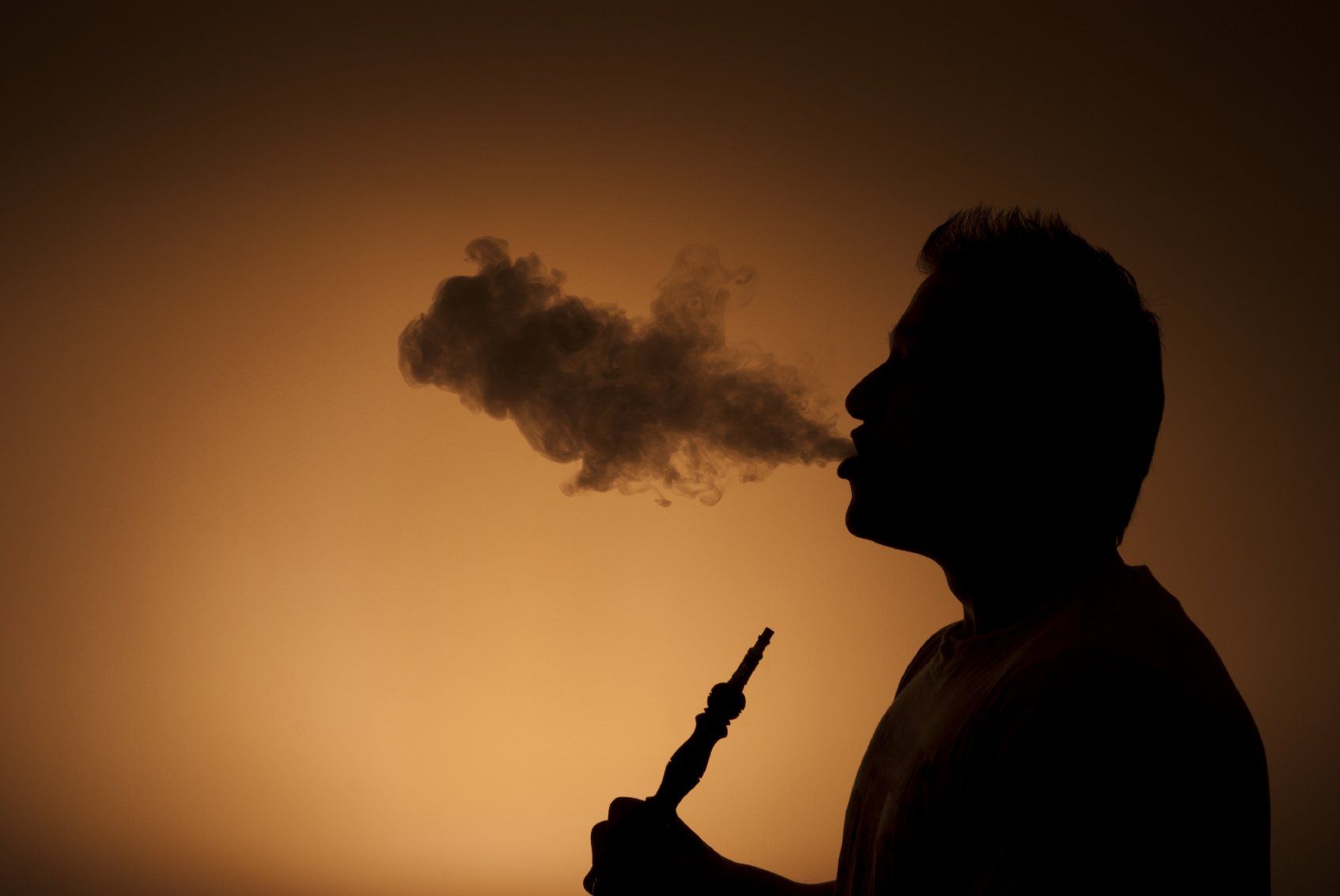
Smoke-free with the smoke-free injection: A way to quit smoking
Have you tried several methods to quit smoking but haven't had lasting success? The Smokeless Injection could be the solution you've been looking for. This innovative smoking cessation method has already helped many people overcome their nicotine addiction and lead a smoke-free life.
What is the smoke-free injection?
The Smoke-Free Injection is based on the homeopathic treatment method and uses a special blend of natural substances that help reduce nicotine addiction. These substances are injected subcutaneously, i.e., under the skin, where they take effect. The Smoke-Free Injection is a painless and effective way to counteract withdrawal symptoms and reduce nicotine cravings.
How does the smoke-free injection work?
The active ingredients in the smoke-free injection influence the brain's reward system, which is responsible for nicotine addiction. Injecting these natural substances significantly reduces withdrawal symptoms such as restlessness, irritability, and the urge to smoke. At the same time, the body's detoxification is promoted, making it easier to quit smoking.
Advantages of the smoke-free injection:
- Effectiveness: The Smoke-Free Injection has been proven to be an effective method for quitting smoking and can help you stay smoke-free long-term.
- Fast effect: After the first use of the smoke-free injection, many people notice a significant reduction in their craving for nicotine.
- Natural ingredients: The substances used in the smoke-free syringe are of natural origin and have no known side effects.
- Personal care: The treatment with the smoke-free injection is carried out by trained specialists who will support and advise you throughout the entire process.
Conclusion:
If you're ready to take the final step toward a smoke-free life, the Smokeless Injection might be the right option for you. With its effective action and natural ingredients, it offers a promising alternative to conventional smoking cessation methods. Schedule an appointment today and start your journey to a healthier, smoke-free life!
Therapy: Acupuncture Mesotherapy Smoke-free injection Counseling
Cost: 200 euros per session according to GOÄ
Travel medicineical advice
Chirotherapy-Manuel Medicine
Nutritional medicine
Note: These recommendations are intended for individuals and families who have been recommended or ordered to self-quarantine and isolate.
Neural therapy-procaine base infusion
Huneke neural therapy is a reflex therapy procedure that uses the versatile properties of the local anesthetic procaine.
How does neural therapy work?
The application of a local anesthetic (procaine) influences the autonomic nervous system, thereby achieving profound regulation and thus self-healing in the treated area or the entire organism. It is not the local anesthetic effect that is utilized, but rather the additional properties of procaine:
Sympatholytic effect (regulation of the autonomic nervous system)
Anti-inflammatory effect
Improve blood circulation
Pain inhibition
Improves the energy balance of cells
Possible applications of neural therapy
Neural therapy with local injections under the skin (so-called wheals) or near nerves: used for pain and inflammation
Disturbance field therapy:
This is a particularly important aspect of neural therapy, as it allows for the identification of so-called disruptive fields (scars, chronic inflammation) and, at the same time, effective treatment. Disturbing fields are often the cause of treatment resistance in certain diseases.
Are there any side effects?
In general, neural therapy is a very well-tolerated procedure. Allergic reactions are very rare, but these are ruled out beforehand with a test.
Rarely, temporary minor hematomas may occur at the injection sites. Sometimes, especially with infusion neural therapy, slight dizziness may occur for a few minutes after treatment. Serious side effects, such as irritation of nerves, blood vessels, or organs, are extremely rare.
Procaine base fusion neural therapy:
This involves administering a procaine base infusion via a vein in the arm. It is used for inflammatory rheumatic diseases, fibromyalgia, and burnout.
Procaine base infusion
Procaine base infusion is one of the most important supportive complementary therapies for all cancers and most chronic diseases.
The procaine base infusion combines the biological properties of procaine with the body's most important base, sodium bicarbonate. It accelerates tissue deacidification and promotes blood flow to tissues that have been undersupplied for a long time and are chronically painful or inflamed. In addition to its anti-inflammatory and detoxifying effects, the treatment also has a pain-relieving and relaxing effect on the nervous system ("sympatholysis"). The therapy has proven to be highly beneficial for the effects of other immune-boosting therapies and has a protective effect on the liver, pancreas, and heart.
In addition to cancer, procaine base infusions are used for the following diseases:
Chronic fatigue
Chronic degenerative diseases (osteoarthritis)
Chronic inflammation and pain conditions (e.g. fibromyalgia, rheumatism)
Heart disease with tachycardia
Arterial hypertension
Immune disorders, autoimmune diseases
Allergies, asthma
Depression, anxiety and panic attacks, sleep disorders
Heavy metal contamination
Lipid metabolism disorders (increased blood lipids)
osteoporosis
The infusions consist of:
250-400ml 0.9% NaCl solution
60-120ml 8.4% sodium bicarbonate, in patients with heart failure 60ml
10-40ml 1% Procaine (Pasconeural)
The therapy consists of 10 infusions, 2-3 times a week, i.e. 5 weeks, infusion time approx. 45-60 min.
Patients with cancer can receive an infusion of vitamin C in a therapeutic dose of 15-60g immediately after the procaine base infusion.
Principle of action of procaine base infusions in cancer:
Tumor cells produce an excess of acid, which they deposit on the outside of their cell walls. A protective acid mantle forms. The immune cells cannot penetrate this protective mantle and thus cannot destroy the tumor. They are even damaged by the acid. This is where the procaine-base infusion comes into play. If the procaine succeeds in removing the tumor cells' protective acid mantle, the released acid can be neutralized by the alkaline infusion fluid. The body's own immune cells (macrophases, natural killer cells, and dendritic cells) can now attack the tumor cells without damage.
Procaine is metabolized in the blood and tissues by pseudocholinesterase into para-aminobenzoic acid (PABA) and diethylaminoethanol.
Para-aminobenzoic acid is an antihistamine, activates membrane stabilization and thus capillary sealing, binds ceramide, by inhibiting DNA. Methylase has an antimitotic effect, inhibits growth of certain cancer cells, activates cell metabolism as a folic acid antagonist and increases the effectiveness of chemotherapy
Diethylaminoethanol has a direct vasodilating effect on the endothelium, binds long-chain unsaturated fatty acids, cancels inflammatory effects (inhibits the formation of IL1 and IL6 as well as CRP, inhibits phospholipase A2) and increases the endocannabinoid level by inhibiting the degrading fatty acid amide hydrolase
Although it cannot cure patients with existing tumor disease alone, this natural procedure is very useful as a supplement to immunotherapy with GcMAF or therapy with dendritic cells.
Acid excretion and thus the body's detoxification are increased with this therapy. This allows the body's healing processes to be activated much more easily than without this therapy. The result can be a better quality of life during cancer treatment.
The infusion itself is well tolerated. Side effects are extremely rare.
During the entire infusion, the patient is monitored on a monitor (pulse oximeter, ECG, RR, SaO2 if necessary).
High-dose magnesium infusion
Magnesium is particularly important for muscle and nerve function. No more than 300 mg can be taken orally (with capsules or powder). Magnesium deficiency is widespread: our diet already contains too little magnesium (only about 100 mg). Supplementation is necessary for muscle pain, stress, and nervous exhaustion.
With the magnesium infusion you receive 1g to 2g (= 1000 to 2000mg) of magnesium intravenously, i.e. in a direct-acting form, with immediate vegetative calming, muscle-relaxing and antispasmodic effects, and with pain relief (only 80mg of magnesium is absorbed orally per day and very often leads to gastrointestinal complaints).
Procaine base infusion and magnesium infusion
Indications for combined infusion treatment:
Neck, back, lower back pain, herniated discs
Joint pain, arthrosis, rheumatism, inflammatory irritations
Nerve pain in shingles, polyneuropathy, neuralgia
Headaches, migraines, jaw muscle pain (CMD)
Fibromyalgia, for treatment-resistant pain.
Conducting a series of procaine base infusions, additionally with magnesium
The first 4 infusions 2x per week, then 1x per week.
Typically, 6-8 infusion treatments are necessary for sustained improvement of pain and functional disorders as well as general well-being.
Total treatment duration: 6-8 weeks
Acupuncture
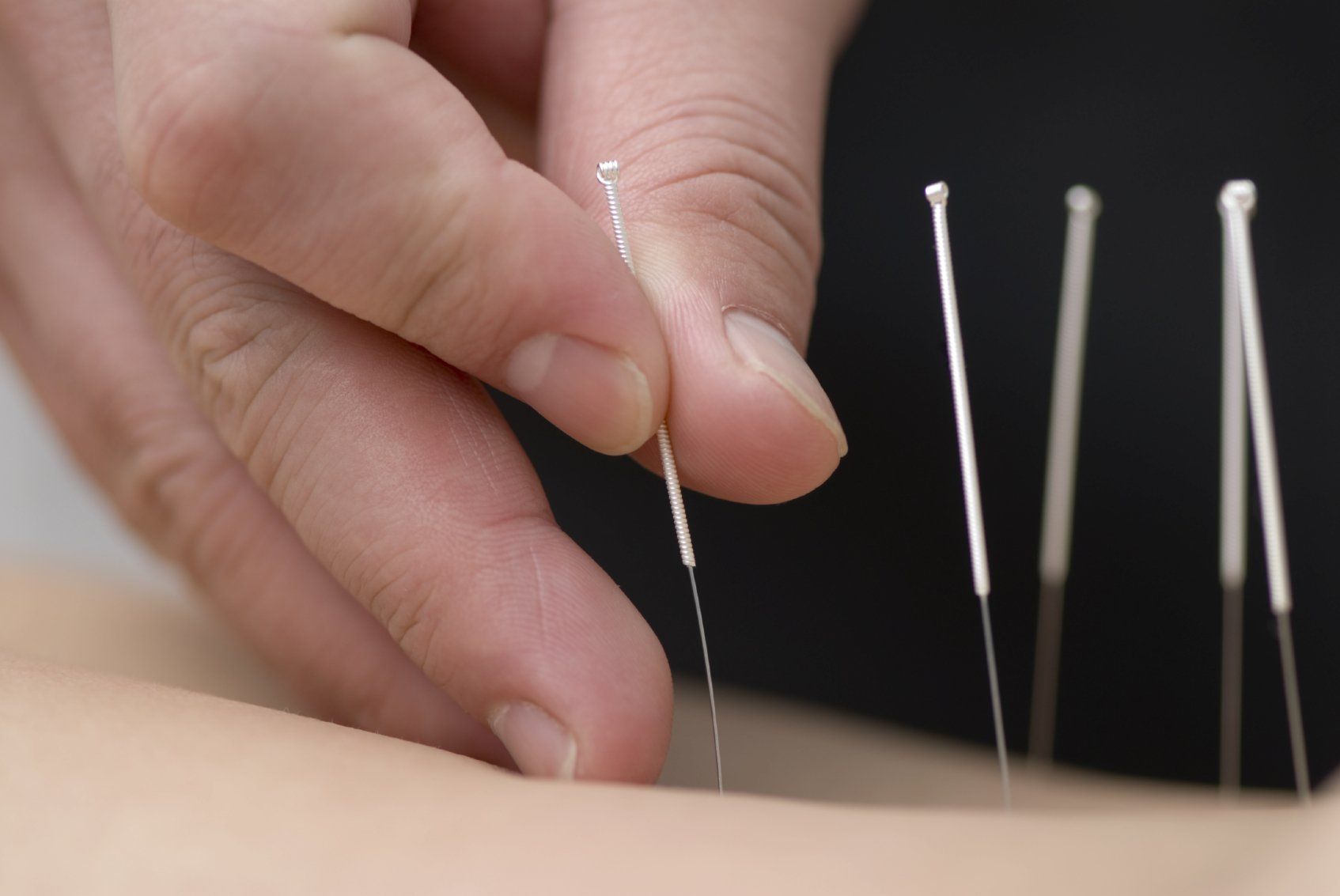
leech
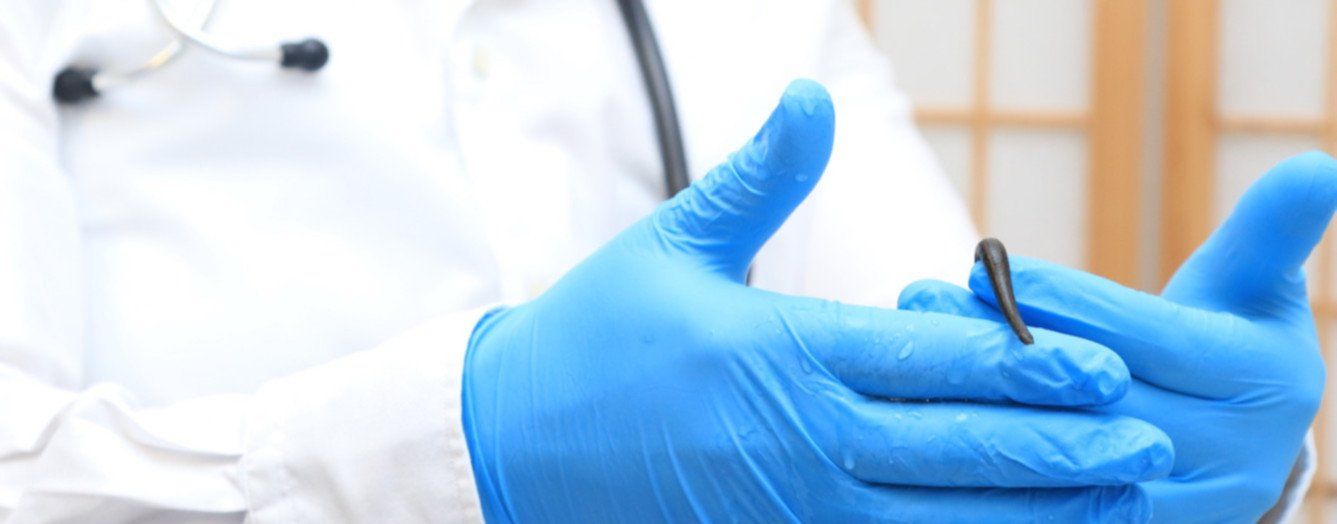
Schröpfen-Hijama-Cupping

"Cupping has the power to remove harmful substances from the head, reduce pain in the same part, relieve inflammation, restore appetite, strengthen a weak stomach, eliminate dizziness and the tendency to faint, draw lodged harmful substances to the surface, dry up discharge, stop bleeding, promote menstrual flow, stop the tendency to pus formation in infections, relieve rigidity, accelerate and alleviate the healing crisis in illnesses, dispel drowsiness, promote natural calm, and remove heaviness. These and many similar complaints are alleviated by the proper application of cupping, whether dry or bloody."
(Alpinus-Herodotus 413 BC)
"Disease is an unnatural condition of the body. Nature tries its best to restore unnatural conditions to a healthy state. The physician's task is to cooperate with nature. When a patient suffers from disease, nature strives to overcome the pathogenic factors, and if it is obviously succeeding, the physician should not intervene. However, if nature is about to succumb in this struggle, he must come to its aid by doing what it would do if it could. The physician must protect what is in accordance with nature and remove what is not."
(Galen ca. 129-200 AD)
cupping
Cupping is a form of stimulation therapy based on negative pressure in cups. Through the negative pressure, cupping stimulates the immune system, metabolism, and lymph flow. It has proven particularly effective in cases of blood and Qi stagnation.
Cupping glasses, which were formerly made of bamboo, are now used for cupping. The cups are heated before being applied, allowing the hot air to escape, creating a vacuum. The glass is quickly placed on specific areas of the skin, sucking the skin in. Two forms of cupping are used. The type used depends on whether the area is more likely to be anemic or hyperaerotic.
Dry cupping:
If anemia is present, dry cupping is preferred. A flame creates a vacuum in the cup, which is then quickly applied to the skin. The skin is drawn in by the negative pressure. The suction therapeutically removes excess cold and moisture from the body, allowing the body to return to balance. Occasionally, a small amount of blood is drawn out, resulting in local bruising. However, this is not harmful and will disappear after only one to two days.
Bloody cupping:
Blood cupping is used for localized blood excess. It is a modified form of dry cupping, in which the cupping sites are lightly incised iatrogenically. The small wound is painless and supports the blood-draining effect of cupping. As soon as the cupping head is placed on the wound, blood flows out of the wound in a controlled manner.
After cupping treatment, most patients feel pleasant and relieved because the energetic conditions are balanced again.
Pulsating cupping therapy:
Pulsed cupping therapy is a combination of traditional cupping, massage, and lymphatic drainage. It is achieved by superimposing static negative pressure with harmonic vacuum pulses. The oscillation duration, oscillation intensity, and static negative pressure are varied depending on the tissue and therapy type. When used correctly, the patient experiences a similarly beneficial effect to that of a traditional massage. Furthermore, this technique allows the therapist to move deep layers of tissue, thereby releasing blockages and resupplying the tissue with nutrient fluids. It is used, for example, for arthritis, circulatory disorders, muscle hardening, scar treatment, and fascia therapy.
Areas of application
Cupping is said to be helpful for a variety of complaints, including migraines
rheumatism
disc problems
lumbago
Knee problems
Carpal tunnel syndrome
high blood pressure
sciatica
Tonsil problems (especially in the special form of reddening)
bronchitis
asthma
Headache
Kidney failure
Weather sensitivity
Hypotension
fatigue
Depression
Weaknesses
Digestive problems
Cardiovascular diseases
Organ problems
Fever
A cold
flu
Homeopathy

Autologous blood treatment
Ozontherapie
Everything in our life on Earth relies entirely on the presence of oxygen. We can survive for days without food and water, but without oxygen, life ends within minutes. Since our bodies cannot store oxygen like food, we must absorb oxygen throughout our lives. Interestingly, although oxygen is so essential to life, it also leads to the formation of oxidative (harmful) oxygen radicals, which underlie disease and aging. This is why scientists refer to oxygen as a "vital poison." We cannot live without oxygen, but we must also protect ourselves from the damage caused by the radicals it produces. For this reason, our bodies have an "antioxidant" defense system that neutralizes these radicals.
Ozone therapy effectively supports this protective system by both increasing oxygen utilization in the tissues and helping to neutralize the resulting harmful oxygen radicals. We have been researching ozone therapy for years. With proper application and careful patient selection, ozone therapy will in many cases deliver encouraging results as a supportive treatment method for various diseases.
Ozone therapy plays an important role in the treatment of cardiovascular diseases, particularly in applications that use the patient's own blood intravenously. At the same time, it regulates the immune system, protecting against harmful bacteria and viruses with its cleansing properties. This aspect of ozone therapy is particularly beneficial for people who frequently suffer from illnesses such as flu, colds, and the common cold during the winter months and during the changing seasons. Applying ozone to joints and muscles loosens these areas, leading to pain relief and relaxation. This method can be used particularly for herniated discs, muscle atrophy, and joint tension.
What is ozone?
Ozone is a gas consisting of three oxygen atoms and exists in a gaseous state. Unlike the stable oxygen molecule (O2), ozone (O3) is an unstable molecule. It was discovered in 1839 by the German chemist Christian Friedrich Schönbein. In the early years after its discovery, it was primarily used for disinfection purposes. In 1860, ozone began to be used for disinfection in Monaco's water treatment plants. The disinfecting effect of ozone is based on its strong oxidizing properties. It not only kills viruses and bacteria but can also oxidize all microorganisms and toxins.
Ozone is a colorless gas with a characteristic odor (it is detected after thunderstorms, at higher altitudes, or along coastal areas). Its name comes from the Greek word "to smell." Due to its strong oxidizing and disinfecting properties, it continues to be used in water treatment plants worldwide that supply drinking water.
The antioxidant defense system is particularly weakened in long-term diseases such as obesity, hypertension, type 2 diabetes, and metabolic syndrome. Ozone therapy strengthens this system by helping to combat the effects of harmful oxygen radicals.
The production and use of ozone:
Ozone is produced from oxygen using generators. In ozone applications, where inhalation of ozone is toxic, it is important to correctly adjust the dosage. Through the dosage, various purposes such as antioxidant, disinfectant, immune-stimulating or suppressing, and circulation-promoting effects can be achieved. Another important consideration in ozone therapy is the material used. Ozone can only be applied using materials such as stainless steel, borosilicate glass, polyethylene, polypropylene, and Teflon. The use of PVC or DEHP-containing materials can lead to serious health problems. Furthermore, sterility and antiseptic measures must be observed during application, and appropriate sterile filters should be used.
Applications of ozone therapy:
- Major ozone therapy: This is the most common method. It involves taking 100-200 ml of blood from the patient, mixing it with a fixed dose of ozone, and then administering it intravenously.
- Minor ozone therapy: 2-5 ml of blood is taken from the patient, mixed with a fixed dose of ozone and then administered intramuscularly.
- Ozone application in body cavities: Ozone can be applied rectally or vaginally or by spraying into the ear canal.
- Ozone application in joints and muscles: In diseases of the musculoskeletal system, ozone injections into joints, tendons, ligaments and muscles are used to relieve pain and control inflammation.
Areas of application of ozone therapy:
According to the Madrid Declaration, the indications for ozone therapy can be divided into two main categories:
Diseases in which ozone therapy has been successful:
- Fistulas and abscesses, infected wounds, pressure ulcers, chronic ulcers, diabetic foot ulcers and burns
- Advanced ischemic diseases (circulatory disorders) (Buerger's disease, ischemic heart disease)
- Lumbar and cervical disc herniations
- Age-related macular degeneration (dry type)
- Local calcifications
- Chronic fatigue syndrome and fibromyalgia
- Root caries in children
- Recurrent or persistent infections in the mouth
- Bartholin abscesses or vaginal candidiasis
- Vasculitides (Raynaud's disease, Behçet's disease, FMF)
- Antibiotic-resistant infections (hepatitis, HIV, herpes, zoster, papilloma virus, candida infections)
Diseases in which ozone therapy supports modern treatment:
- Together with chemotherapy and radiotherapy
- Autoimmune diseases (multiple sclerosis, rheumatoid arthritis, ankylosing spondylitis, Crohn's disease, ulcerative colitis, early Parkinson's disease)
- Pulmonary diseases (asthma, COPD, pulmonary fibrosis)
- Skin diseases (psoriasis, atopic dermatitis)
Conditions in which ozone therapy should not be performed:
Absolutely contraindicated:
- Favism (glucose-6-phosphate dehydrogenase deficiency)
- Uncontrolled hyperthyroidism (overactive thyroid)
- Leukemia
Use with caution:
- Acute bleeding (not within 3 weeks of a heart attack or bleeding-related stroke)
- Pregnancy (especially in the first trimester)
- Blood clotting disorders
- Uncontrolled cardiovascular disease
- Patients with reduced antioxidant protection
- Patients with organ transplants
Duration of ozone therapy:
Typically, 15-20 sessions are performed once or twice a week. Treatment can be performed daily as needed. The patient is expected to be cured between the 5th and 10th sessions, and after the 12th session, antioxidant defense mechanisms are expected to be activated.
Interactions with medications during ozone therapy:
Patients receiving antioxidant therapies such as vitamin C or glutamate should not take them concurrently with ozone therapy. There should be at least four hours between doses.
Diabetics taking insulin or oral blood glucose lowering medication should monitor their blood glucose levels regularly during ozone therapy and take the medication either 4 hours before or after ozone therapy.
Patients taking antihypertensive medications should take their medication either 4 hours before or after ozone therapy.
Patients taking blood thinning medications should inform their doctor about ozone therapy.
Examples of clinical situations in which ozone therapy is used:
Due to its immune-boosting properties, ozone therapy is often used in inflammatory joint diseases such as rheumatoid arthritis and ankylosing spondylitis. High efficacy has been reported, particularly in patients with ankylosing spondylitis and concomitant intestinal inflammation.
Eliminating circulatory disorders and increasing tissue oxygenation in cases of impaired wound healing due to circulatory disorders are important benefits of ozone therapy. Non-healing wounds due to diabetes mellitus also fall within the scope of ozone therapy.
Due to increased oxygenation, improved circulation, and the removal of oxidative substances, ozone therapy has been shown to have positive effects on the control of fibromyalgia and chronic fatigue syndrome. It helps relieve pain and fatigue and regulates sleep.
In the case of problems of the musculoskeletal system such as herniated discs in the lumbar and cervical spine as well as joint diseases (such as calcifications), both ozonation of the blood and ozone therapy around and in the joints contribute to long-term improvement.
By increasing antioxidant capacity, migraines and headaches can also be treated with ozone therapy. The combination with acupuncture, in particular, shows very good results.
In addition to treating diseases, ozone therapy also plays a role in a healthy lifestyle and anti-aging measures. Along with dietary changes and regular physical exercise, regular ozone therapy leads to noticeable improvements. It not only promotes a better sense of well-being but also prevents the development of diseases. For example, for patients who are particularly affected by seasonal changes, especially those with allergic reactions during seasonal changes, it is a practical treatment method that has both a preventative and symptom-relieving effect.
Ozone therapy has been successfully used worldwide for over 40 years. The "Major Autohemotherapy Treatment," specifically hyperbaric ozone therapy, used at the Dr. Katmer Health Center, represents the most effective form of treatment. It has been shown to treat many, even the most serious, illnesses.
Ozone therapy is a natural treatment method that can significantly shorten or even prevent the progression of many diseases. The intensive effect of ozone/oxygen therapy on improving blood circulation is further supported by multiple responses to numerous disease factors.
Ozone treatment is primarily used for peripheral and central circulatory disorders, eye diseases caused by circulatory disorders, migraines, dizziness, sudden hearing loss, and tinnitus. It is also successfully used to treat arteriosclerosis, coronary heart disease, hypercholesterolemia, hyperuricemia, gout, and liver damage. Another therapeutic area is revitalization in cases of tumors or serious illnesses. Due to its proven effect on the immune system, ozone therapy is effective in all cases of stress and other lifestyles that place strain on the immune system.
In short, ozone/oxygen therapy heals naturally and leads to well-being.
Areas of application
General immune deficiency with susceptibility to infection
Acute and chronic inflammation
Revitalization in cases of poor performance and fatigue
Autoimmune diseases (e.g. rheumatism, Crohn's disease)
as a complementary therapy for cancer, also for follow-up treatment
In addition to pain therapy
Circulatory disorders
Metabolic diseases, e.g. lipid metabolism disorders, gout
Liver diseases, regardless of the trigger
Mood adjustment treatment for allergies, skin diseases and asthma
Mode of action
Ozone's effects vary depending on the application and dosage. In autohemotherapy, ozone activates the immune system, stimulating the increased production of messenger substances (e.g., interferons, interleukins). At the same time, ozone activates enzymes that neutralize dangerous free radicals. Ozone also improves blood flow.
Implementation
During ozone autohemotherapy, blood is drawn from a vein. For the "large" autohemotherapy, up to 200 ml of blood is drawn. The drawn blood is enriched with ozone in a special device. The ozone is electrically generated from pure oxygen in the device and precisely dosed. Your blood is then returned to you via the vein. The needle remains in the vein for this purpose. The entire treatment takes approximately 20 minutes.
Depending on the indication, there is also a small autohemotherapy treatment, in which only a few milliliters of blood are treated with ozone (and possibly mixed with homeopathic preparations) and injected into the muscle. Occasionally, ozone is also applied externally, for example, for impaired wound healing, leg ulcers, etc.
Risks
Ozone autohemotherapy is one of the lowest-risk treatment options in medicine. Thorough training of our practice team, regular maintenance of the equipment, and more ensure smooth treatments. Bruising on the vein rarely occurs, as is common with other blood draws.
Ozone autohemotherapy is contraindicated if there are coagulation disorders, a heart attack or stroke has occurred in the last 3 months, or there is untreated hyperthyroidism.
What do patients need to pay attention to?
In ozone autohemotherapy, metabolic processes are triggered as a response to a stimulus. It is therefore a so-called regulatory treatment. To encourage the body to undergo this adjustment, repeated stimulation is required (as in sports training). Therefore, repeated treatments are necessary. Up to 10 treatments are performed. Regular patient cooperation is required for full effectiveness.
Please note that the various ozone therapies are not covered by statutory health insurance. This only covers the costs of "adequate and appropriate care." Private health insurance providers are usually much more accommodating, depending on the plan.
If you would like treatment or have any questions about therapy, please contact our practice team!
Ozone therapy
We are all familiar with the ozone layer in our atmosphere, which protects us from the sun's burning rays. This layer owes its name to the unstable gas ozone, which is formed by the combination of three oxygen atoms. Ozone is essential to our lives and is now used to treat various diseases and for skin rejuvenation. The use of this gas for therapeutic purposes is called ozone therapy.
One of the most common applications of ozone therapy is anti-aging and skin tightening treatments. However, ozone can also be used as an adjunct in the treatment of many diseases. The gas used in such procedures is called medical-grade ozone and consists of a mixture of 5% ozone and oxygen.
Methods of ozone therapy
Ozone therapy is applied in different ways depending on the needs of the individual or the affected area. These include direct methods, such as injection or incorporation of a small amount of ozone into the body vapor, and indirect methods, such as absorption of ozone by the body.
Major ozone therapy:
This is the most common application of ozone therapy. It involves taking 50 to 100 ml of blood from the patient, combining it with a mixture of oxygen and ozone in a special sterile container, and then repeatedly injecting the patient. The injection is given either into a vein in the arm or buttock.
Minor ozone therapy: This method is similar to standard ozone therapy, but this time a smaller amount of blood (usually between 5 and 10 ml) is taken and mixed with ozone in a sterile syringe before being returned to the patient. This method is also widely used and is often used for people who don't have specific complaints but want to boost their immune system, for example, especially during colder seasons or transitional periods.
Local ozone therapy: This method is typically used to treat severe muscle pain or cramps, where ozone is injected directly into the affected muscle or muscle group.
Ozone therapy for joints: In contrast to local ozone therapy, this method is applied directly to problematic joints, especially in joint diseases such as osteoarthritis
Bag method: This method involves the use of ozone-oxygen mixtures that are slowly absorbed into the body by placing special bags around the hands and feet.
Ozone sauna method: This method is used primarily for skin rejuvenation and immune system strengthening and can be considered a cosmetic treatment. We will have a separate section on the ozone sauna method later in our article.
Benefits of ozone therapy
Ozone therapy plays an important role in the treatment of cardiovascular diseases, particularly in applications that involve the use of the patient's blood. It also strengthens the immune system by killing harmful bacteria and viruses, thus protecting the body from infection. This property of ozone therapy is particularly useful for people who frequently suffer from colds, flu, and other infections during the winter months or transitional seasons. Applying ozone to muscles and joints can help relieve pain and promote relaxation. This method can be particularly helpful for muscle calcification and joint stiffness.
The use of ozone therapy as part of anti-aging treatments is closely linked to the benefits mentioned above. By cleansing blood vessels and strengthening the immune system, circulation improves, resulting in firmer and more youthful skin. Hardened skin becomes softer and healthier. Furthermore, the application of ozone during therapy can give the patient a feeling of vitality and energy, which has a positive effect on fatigue, exhaustion, and weakness.
Ozone also has a profound impact on brain function. Treatments with ozone can help balance hormone production in the brain and improve certain memory problems. While it doesn't offer a solution for clinical forgetfulness due to psychopathological causes, it can be helpful in forgetful conditions caused by aging, fatigue, stress, and other factors. Furthermore, ozone therapy can help with relaxation and coping with depression during stressful times.
If you do some research online, you'll find that ozone therapy is often mentioned in connection with weight loss methods. However, it's important to note that ozone therapy itself does not directly lead to weight loss. No conclusive evidence has been found for a weight-loss effect from ozone applications. Nevertheless, ozone therapy, along with a healthy diet and exercise program, as well as other appropriate methods, can serve as a supportive option for weight loss. The various benefits of ozone therapy, such as cleansing blood vessels and tightening skin, can help the body see weight loss results more quickly. However, it's important to emphasize that ozone therapy should not be considered a primary method for weight loss, and it's advisable to stay away from centers that claim that ozone alone can lead to weight loss. If you're considering ozone therapy as a supportive method for weight loss, ozone sauna therapy may be the best option for you.
Medical ozone therapy
The first medical application of ozone dates back to Dr. Albert Wolff, who treated German soldiers with gangrene and similar serious injuries during World War I. The first important organization to discuss the use of ozone as a therapeutic agent was the 59th Meeting of the German Surgical Society, held in Berlin in 1935. Dr. Erwin Payr gave a presentation there entitled "Ozone Applications in Surgery," in which he presented cases from his own practice. From this point until the 1980s, various physicians and researchers used ozone therapy individually. However, starting in the 1980s, both scientific studies and case series on the medical application of ozone began to increase rapidly. Medical ozone is always used as a mixture of pure ozone and pure oxygen. In this mixture, ozone should be no more than 5% and oxygen at least 95%. An ozone therapist is a medical doctor trained in ozone therapy who determines the dosage based on the condition of the disease.
Basic principles of medical ozone therapy
Ozone therapy involves administering a specific amount of oxygen/ozone mixture to body cavities or the circulatory system. This mixture can be administered intravenously (into the vein), intramuscularly (into the muscle), intraarticularly (into the joint), intrapleurally (into the abdominal cavity), intrarectally (into the rectum), intradiscally (into the intervertebral discs), and topically (onto the skin). The classic method of ozone therapy was described by Wolff in 1974. In this method, a specific amount of blood (usually 100 ml) is withdrawn and then exposed to an oxygen/ozone mixture in an ozone-resistant container for 5–10 minutes before it is reintroduced into the person (autohemoterapy). This method is called major autohemoterapy (OHT). Since then, millions of ozone autohemoterapy sessions have been performed.
Because ozone is a reactive molecule used for medical purposes, there are a few things to keep in mind: Ozone should never be administered pure, but always mixed with oxygen in a specific ratio. In this mixture, the oxygen content should not be less than 95% and the ozone content should not exceed 5%. Avoid introducing normal room air into this mixture. Ozone-resistant materials (stainless steel, neutral glass, and Teflon) should be used throughout the entire procedure.
Basic philosophy of medical ozone therapy
In our country, the treatment of diseases is based on the "Western medical orthodoxy" approach, the foundations of which were laid only in the last 50 years. This treatment approach, known as modern medicine, aims to eliminate disorders in the human body using "pharmacological molecule drugs" produced by pharmaceutical companies. Despite its success in treating certain diseases, major flaws in the philosophy of this medical method have emerged in recent years, starting in the 1980s. This medical method, which does not view the human body as a whole and treats diseases within the body only with "fish," but never teaches how to "catch fish," accepts this. However, the human body has potential that can be used to treat diseases.
For example, despite breathtaking advances in medicine and technology, the only practice recognized today for extending human lifespan is "fasting and eating little," known as "calorie restriction." No medication (antioxidant, vitamin, mineral) or healthy food (fruits, vegetables, etc.) prolongs human life. Calorie restriction is a treatment approach that activates the human body's own potential without administering drugs. The same applies to "exercise and movement." Today, exercise is more effective than medication for preventing long-term (chronic) diseases such as hypertension, obesity, type 2 diabetes, and cardiovascular disease. As is easy to see, this very important and vital method also does not administer drugs to the human body, but rather utilizes its own potential. Treatment methods that utilize the human body's own healing potential are considered holistic medicine.
Ozone therapy is one such treatment method, based on the human body's two powerful potentials: antioxidant and anti-inflammatory, and strengthens the body by triggering an alarm response to disease. Over the past twenty years, research has shown that ozone therapy supports the human body's own healing potential in several ways.
The body's antioxidant defense system
Life on our planet relies entirely on the presence of oxygen. We can survive for days without food and water, but without oxygen, life ends within minutes. Since our bodies cannot store oxygen like food, we must consume oxygen throughout our lives. Interestingly, although oxygen is so essential to life, it also leads to the formation of oxidizing (harmful) oxygen radicals that cause disease and aging. For this reason, scientists refer to oxygen as a "vital poison." We cannot live without oxygen, but we also need to protect ourselves from the damage caused by the radicals caused by oxygen. For this reason, our bodies have an "antioxidant" defense system that neutralizes these radicals. Ozone therapy supports this protective system by not only increasing the oxygen utilization of tissues but also helping to neutralize the resulting harmful oxygen radicals.
In hyperbaric ozone therapy (HOT), up to 50–200 ml of blood is drawn from a vein in the arm in a closed system, mixed with 15–40 μg/ml of ozone and oxygen, shaken, and reinfused into the patient. This procedure is performed once during the same session.
In children, patients with fragile veins and in cases of special therapeutic indications, OHT is performed instead of or even in addition to intestinal insufflation (= intestinal gassing).
indication
- Chronic inflammatory diseases and/or
- Diseases associated with inflammation.
Contraindications
- Menstruation (here HOT using intestinal insufflation is used instead).
- Acute myocardial infarction, acute cerebral infarction, severe bleeding.
- Acute renal failure
- Severe poisoning
- Severe mental illnesses
- Ozone allergy
- Pregnancy: 0th – 12th week and 4 weeks before the due date.
- Thyroid diseases: Hashimoto's disease yes, but caution should be taken with hyperthyroidism and parathyroidism.
- There is still uncertainty about transplants.
Side effects
The therapeutic agents used in HOT (ozone and oxygen) do not cause any side effects. However, symptoms such as internal heat, extreme fatigue as a result of the pronounced detoxification reaction (drink plenty of fluids!), and, in very rare cases, a Herxheimer reaction, may occur, especially during the first HOT therapy session.
Cost
A hyperbaric autologous ozone therapy session costs 100 euros. An ozone intestinal insufflation session costs 150 euros.
Please also inquire with your supplementary health insurance provider: some insurers reimburse ozone therapy.
Ozone high-dose therapy
High-dose ozone therapy (OHT)
This is a further development of the existing ozone-oxygen infusion therapy. Dr. Lahodny, an Austrian university lecturer and specialist in gynecology and obstetrics, as well as a general practitioner, has expanded the applicability of the existing therapy through self-experimentation and massively increased its effectiveness. This therapy promotes improved capillary blood flow and the body's self-healing process, thus increasing well-being and the immune system. Circulatory disorders in particular can be treated, and rheumatic diseases, arthrosis, and painful joint diseases can be alleviated in a very short time. Scientific studies are currently underway on the strength of stem cell activation at a certain dose. The ozonides and peroxides from the ozone, in combination with the patient's own blood, are the biological active ingredient with health-promoting properties.
Ozone high-dose therapy OHT according to Dr. Lahodny
Every human body is equipped with a vast potential of stem cells, which provide the body with its own repair facility. High-dose ozone therapy activates the body's own stem cells. The actual healing is not achieved by ozone, but by the stem cells themselves. Ozone instructs all stem cells to repair diseased areas in the body. In addition to the repair process, a single OHT treatment initiates a general, immediate, and complete detoxification of unbound toxins in the body. Lahodny's OHT represents a completely new treatment option with excellent therapeutic success.
Stem cell therapy triggered by high-dose ozone therapy also achieves a significant preventative effect by initiating the healing of asymptomatic, newly developing diseases that are still unnoticed and not yet noticeable to the patient. Therefore, OHT rarely leads to the outbreak of disease, as unaware lesions are already repaired during the asymptomatic phase. OHT, performed at six-month intervals, is an excellent preventative investment in your health.
Proceed
In Lahodny's high-dose ozone therapy (OHT), up to 200 ml of blood is drawn from a vein in a closed system, mixed with ozone and oxygen, shaken, and reinfused into the patient. This procedure is repeated 10 times in the same session.
In children, patients with fragile veins and in cases of special therapeutic indications, OHT is performed instead of or even in addition to intestinal insufflation (= intestinal gassing).
indication
Preventive and for virtually every acute and chronic illness.
No success can be achieved in cases of polyneuropathy, tinnitus or sudden hearing loss that occurred more than 8 hours ago.
Contraindications
Menstruation (here OHT using intestinal insufflation is used instead).
Acute myocardial infarction, acute cerebral infarction, severe bleeding.
Pregnancy: 0th – 12th week and 4 weeks before the due date.
Thyroid diseases: Hashimoto's disease yes, but caution should be taken with hyperthyroidism and parathyroidism.
There is still uncertainty about transplants.
Side effects
The therapeutic agents used in OHT (ozone and oxygen) do not cause any side effects. However, symptoms such as internal heat, extreme fatigue as a result of the pronounced detoxification reaction, and, in very rare cases, a Herxheimer reaction may occur, especially during the first session of OHT therapy.
(The Herxheimer reaction is described, for example, in the treatment of spirochete bacteria. The massive decomposition of large quantities of bacteria after initiation of antibiotic therapy, or in this case ozone, leads to the release of bacterial endotoxin, which leads to the secretion of inflammatory mediators. This can cause high fever, headache, joint and muscle pain, nausea, and skin rashes. The symptoms usually last from a few hours to several days.)
Preliminary discussion
The following topics will be addressed in a preliminary discussion:
Question about taking medication such as blood pressure reducers, antibiotics, blood thinners (Marcoumar, Xarelto, Aspirin) etc.
Ask about illnesses such as high or low blood pressure, anemia, allergies.
Information about blood thinning with heparin during high-dose ozone therapy: To ensure that the blood can be easily drawn from the body and then mixed with ozone and reintroduced into the bloodstream without clotting, approximately 7500 IU of heparin is added to the blood at the beginning of the first run. At the end of the OHT session, you will receive a pressure bandage labeled with the dose, the name of the medication, and the date and time of the heparin administration. This bandage must be worn until 8:00 a.m. the following morning. This is a precautionary measure: if something happens to you, such as an accident or a fall, the medical staff will be informed about the blood thinning treatment being performed on you.
Preparation
Fluid intake: Drink at least 0.75 liters of fluid (water or unsweetened tea) within half an hour before your OHT session, and another 0.75 liters of fluid at least once during the session. High-dose ozone therapy will only work optimally if you have consumed enough fluids. Going to the toilet: Your bladder should be empty before starting high-dose ozone therapy.
Length of time
A high-dose ozone therapy session can last between 50 minutes and 2 hours.
Follow-up
During and for four weeks after high-dose ozone therapy, a sugar-, dairy-, and animal-product-free diet must be followed. This is the only way to ensure the toxin-free functioning of the body's own stem cells.
Number of sessions
To get the most out of the treatment, Dr. Lahodny recommends 10 consecutive sessions, one per week. For preventative measures and regular detoxification and elimination from the body, he suggests 3-5 sessions every 6 months.
Cost
A high-dose ozone therapy session costs €350. A high-dose ozone colon insufflation session costs €400.
Please also inquire with your supplementary health insurance provider: some insurers reimburse ozone therapy.
From ozone therapy to high-dose ozone therapy:
For decades, the time-tested ozone therapy has been one of the most successful and well-tolerated natural healing methods: By combining it with blood, an oxygen-ozone mixture is created that can cure or significantly improve many illnesses and prevent disease. Blood is drawn from the patient, which is then enriched with a medical ozone-oxygen mixture. This ozonated blood is immediately reinfused. Due to the suspected risk of hemolysis (dissolution of blood), which has never been observed, this procedure was practiced internationally with great caution, with several sessions per week. However, this has changed thanks to Dr. Lahodny's self-experimentation.
Dr. Lahodny determined in his own experiments after administering excessive amounts of ozone that no blood lysis occurred and no side effects occurred, which was confirmed by ongoing laboratory blood tests. In the high-dose ozone therapy developed by Dr. Lahodny, the blood mixed with ozone can be reinfused up to 10 times or more. Before the therapy, the patient drinks up to 0.75 liters of water or tea. A blood thinner is used to maintain blood flow during the reinfusion.
With OHT, Dr. Lahodny has discovered a treatment option that can cure many diseases more effectively in just a few days and is effective in tumor therapy.
Until now, only large-scale ozone autohemotherapy was considered ozone therapy. This involved drawing 200-220 ml of blood from the arm vein. 200-220 ml of ozone at a maximum concentration of 40 µg/ml was added to the blood and, after shaking, reinfused into the patient. This completes the treatment.
Worldwide, blood mixed with ozone is only reinfused once per treatment.
Usually 1 – 2 treatments are carried out per week.
By drastically increasing the concentration and dose of ozone, Dr. Johann Lahodny hoped to improve treatment success. To implement the new treatment concept, he increased the concentration from 40 µg/ml to 70 µg/ml. The necessary blood parameters were tested during frequent self-treatment.
After numerous treatments, Dr. Johann Lahodny created the standard therapy of 10 blood samplings with ozone addition of 70µg/ml and reinfusion in one session for each patient.
For severe illnesses and as tumor therapy, OHT is administered daily for up to one month. The standard procedure is to administer high-dose ozone therapy once a week for a total of 10 weeks. After 10 OHT sessions, almost all illnesses are cured.
How is high-dose ozone therapy performed?
During the treatment, up to 200 ml of blood is drawn from a vein in the arm in a closed system, mixed with ozone and oxygen, shaken, and reinfused into the patient. This procedure is repeated 10 times in the same session, with 2 liters of blood being "washed."
During the treatment, approximately 3 liters of ozone at a concentration of 70 µg/ml are injected into the body. This corresponds to 210,000 µg of ozone.
Duration: approx. 60-150 minutes (depending on vein quality)
Price: 350,00 € per treatment,
Recommendation from Dr. Lahodny:
A successful course of treatment should include 10 sessions of L1 (high-dose ozone therapy). For very persistent chronic diseases, sometimes 20 treatments are necessary.
To maintain health, regenerate, rejuvenate, revitalize and stimulate the immune system, two L1 sessions at 6-month intervals would be required.
Indications:
- for back pain, osteochondrosis and joint pain
- for bursitis, osteoarthritis and arthritis
- in patients with weakened immunity, with the aim of strengthening immunity and protecting them from acute respiratory infections, acute respiratory viral infections, including coronavirus
- in people who frequently come into contact with infectious patients to increase immunity
- for problematic skin - wrinkles, pimples, acne and scars
- for certain genital tract infections
- with prostatitis
- against cellulite and stretch marks
- for fat reduction and weight loss
- Hair loss
- for the treatment of atherosclerosis and multiple sclerosis
- psoriasis
- diabetes
- Rosacea and varicose veins
- for the treatment of high blood pressure
Contraindications:
- an acute stroke
- acute myocardial infarction
- Epilepsy; convulsions
- Allergy to ozone
- acute bleeding
- Head injury
- Menstrual bleeding
Unbeatable advantages in effect:
Stem cells
OHT causes a massive proliferation of the body's own stem cells. Diseased organs and tissues emit peptide signals (protein frequencies, simply put, cries for help). These are perceived by the undifferentiated stem cells, which then flock to the diseased areas. Upon reaching the diseased organs and tissues, they are transformed into the respective organ cells and lead to healing.
Each patient has millions of stem cells. Extreme stem cell activation is the second main reason for the rapid healing achieved through OHT.
It's comparable to building a house: If only two workers are available, it takes two years to complete. However, if 5,000 workers are available, with good organization, the house could be completed in a short time. These many workers can be compared to our stem cells.
Scientific evidence for stem cell activation has also been provided: OHT causes stem cell proliferation of 200-1200%.
Mitochondrial function
OHT dramatically improves mitochondrial function. This results in a 100%-500% increase in the production of the energy molecule adenosine triphosphate (ATP). This extreme increase in energy production leads to enormous performance improvements and incredible healing successes.
All other mitochondrial therapy concepts, such as medications, vitamins, and medical devices, achieve an improvement in energy production of 15–25%. Depleted mitochondrial function is a very important cause of all diseases. Therefore, mitochondrial research is currently at the center of all medical efforts.
From this alone it can be concluded that the improvement of mitochondrial function is to be classified as almost the most important healing factor.
Aged mitochondria (aging begins at age 25) produce less ATP and therefore have reduced performance. A decline in performance is a sign of aging. Scientific evidence for mitochondrial activation through OHT has been established.
Improving and strengthening the immune system
The increased mitochondrial ATP production, the massive activation of the body's own stem cells and the restoration of the entire intestinal function leads to the strengthening of the immune system without taking tablets.
The enormous improvement in the body's defenses prevents the onset of diseases and increases the effectiveness of drug therapies. A small dose of antibiotics is often sufficient to treat simple bacterial infections and even septic processes.
A strengthened immune system enables frequent chemotherapy, eliminates chemotherapy side effects, and intensifies the tumor-killing effect of each chemotherapy drug.
Repair and recovery of the microbiome
OHT rapidly kills pathogenic intestinal bacteria and rapidly promotes the growth and proliferation of healthy intestinal bacteria. The disturbed antibiotic balance (intestinal bacteria also produce antibiotics) and bacterial hormonal influence are stabilized and improved. After ozone is converted into oxygen, the large amount of oxygen released stimulates the intestinal bacteria as an additional therapeutic measure. Further, as yet unknown, effects of the intestinal bacteria are triggered.
Telomeres
OHT leads to telomere lengthening. Telomeres are the genes that initiate cell division.
When the telomeres are completely used up (no longer present), no further cell division occurs. Even a healthy person dies.
If OHT is started early, telomere lengthening can be achieved. If OHT is started no later than age 75 and performed frequently enough, life expectancy can be extended by 10-20 years. The extent of the life extension depends on the frequency of OHT.
No other currently existing form of therapy achieves such a life extension.
Antioxidation
A very powerful antioxidant and detoxifying process is triggered by the NRF2 factor (nuclear factor erythroid 2-related factor 2). The oxytative stress caused by OHT causes a massive release of antioxidant and detoxifying enzymes. Of the numerous enzymes activated, the most important is superoxide dismutase.
toxins
High-dose ozone therapy (OHT) leads to a complete and rapid release of almost all extracellular toxins, which are excreted through stool, urine and skin.
Bacteria, viruses, fungi
Ozone as high-dose therapy (OHT) kills bacteria, viruses, fungi and all other pathogens.
Conclusion
The synergism of all the effects mentioned above results in the incredible and wonderful healing of almost all diseases.
OHT shortens hospital stays by promoting faster healing of infections, wounds, and tumors. OHT should always be combined with heavy metal detoxification (HME), diet, and disease-specific medications.
OHT could bring a new boost and enthusiasm for its use in conventional medicine, as OHT improves the effectiveness of all medications and reduces drug side effects.
The excretion of all intercellular heavy metals is an integral part of any ozone therapy, as heavy metals weaken the entire enzymatic system and block ozone therapy.
High-dose ozone therapy has paved the way to a new world of medicine. OHT achieves healing successes that no other form of therapy has achieved before.
Magnesium Drip
Glutathione
Glutathione infusions: Your path to a healthier body and radiant skin
Glutathione is a powerful antioxidant that occurs naturally in our bodies and plays a crucial role in supporting our health. In recent years, glutathione infusions have gained increasing attention as a potential method for enhancing well-being and improving skin.
What is glutathione?
Glutathione is a tripeptide consisting of the amino acids glutamine, cysteine, and glycine. It is known for its antioxidant properties and plays an important role in the body's detoxification process. Glutathione neutralizes free radicals, reduces oxidative stress, and thus contributes to maintaining optimal cellular health.
The benefits of glutathione infusions
Glutathione infusions are a method for specifically increasing glutathione levels in the body. Some potential benefits of glutathione infusions include:
Improved skin health: Glutathione can help improve the appearance of skin by reducing dark spots, brightening skin, and potentially reducing signs of premature aging.
Strengthening the immune system: Adequate glutathione levels can support the immune system and strengthen the body's defenses.
Detoxification: Glutathione plays a crucial role in detoxifying heavy metals, chemicals, and other harmful substances in the body.
Energy and vitality: Healthy glutathione levels can help increase energy and improve overall well-being.
What can you expect from a glutathione infusion?
During a glutathione infusion, a concentrated solution of glutathione is injected directly into the bloodstream. The duration and frequency of infusions can vary depending on individual needs and should always be administered under medical supervision.
Glutathione (GSH) neutralizes free radicals
Glutathione plays an active role in numerous metabolic processes. It maintains the spatial structure of proteins, supports the transport of amino acids across cell membranes, and plays an important role in the antioxidant defense system. As a contributor to glutathione peroxidase, it eliminates peroxides naturally produced by the body and those produced in increased amounts during oxidative stress. The glutathione system serves as a "scavenging system" that converts constantly produced hydrogen peroxides and lipid peroxides into water and oxygen, playing a crucial role in the defense against reactive oxygen species (oxidative stress) for cell and mitochondrial membranes.
Glutathione also supports the conversion of oxidized, inactive vitamins C and E into their active form. It also contributes to the production of leukotrienes by immune cells, which, among other things, occur during infections and regulate the functions of leukocytes in immune reactions.
Areas of application for the measurement of GSH
Disturbances in the balance of GSH with a decrease in GSH occur, for example, in viral infections, AIDS, cancer, exposure to foreign substances/heavy metals, arteriosclerosis (detectable by elevated MDA-LDL!), and some autoimmune diseases (SLE, rheumatoid arthritis). Normalizing glutathione levels has proven beneficial in such diseases.
Since glutathione is hardly absorbed after oral ingestion due to its limited ability to penetrate membranes, various precursors of glutathione are available, such as S-adenosylmethionine, N-acetylcysteine or membrane-permeable GSH esters (glutathione glycosides), to increase the intracellular glutathione level.
Procain Basen Infusion
Huneke neural therapy is a reflex therapy procedure that uses the versatile properties of the local anesthetic procaine.
How does neural therapy work?
The application of a local anesthetic (procaine) influences the autonomic nervous system, thereby achieving profound regulation and thus self-healing in the treated area or the entire organism. It is not the local anesthetic effect that is utilized, but rather the additional properties of procaine:
Sympatholytic effect (regulation of the autonomic nervous system)
Anti-inflammatory effect
Improve blood circulation
Pain inhibition
Improves the energy balance of cells
Possible applications of neural therapy
Neural therapy with local injections under the skin (so-called wheals) or near nerves: used for pain and inflammation
Disturbance field therapy:
This is a particularly important aspect of neural therapy, as it allows for the identification of so-called disruptive fields (scars, chronic inflammation) and, at the same time, effective treatment. Disturbing fields are often the cause of treatment resistance in certain diseases.
Are there any side effects?
In general, neural therapy is a very well-tolerated procedure. Allergic reactions are very rare, but these are ruled out beforehand with a test.
Rarely, temporary minor hematomas may occur at the injection sites. Sometimes, especially with infusion neural therapy, slight dizziness may occur for a few minutes after treatment. Serious side effects, such as irritation of nerves, blood vessels, or organs, are extremely rare.
Procaine base infusion neural therapy:
This involves administering a procaine base infusion via a vein in the arm. It is used for inflammatory rheumatic diseases, fibromyalgia, and burnout.
Procaine base infusion
Procaine base infusion is one of the most important supportive complementary therapies for all cancers and most chronic diseases.
The procaine base infusion combines the biological properties of procaine with the body's most important base, sodium bicarbonate. It accelerates tissue deacidification and promotes blood flow to tissues that have been undersupplied for a long time and are chronically painful or inflamed. In addition to its anti-inflammatory and detoxifying effects, the treatment also has a pain-relieving and relaxing effect on the nervous system ("sympatholysis"). The therapy has proven to be highly beneficial for the effects of other immune-boosting therapies and has a protective effect on the liver, pancreas, and heart.
In addition to cancer, procaine base infusions are used for the following diseases:
Chronic fatigue
Chronic degenerative diseases (osteoarthritis)
Chronic inflammation and pain conditions (e.g. fibromyalgia, rheumatism)
Heart disease with tachycardia
Arterial hypertension
Immune disorders, autoimmune diseases
Allergies, asthma
Depression, anxiety and panic attacks, sleep disorders
Heavy metal contamination
Lipid metabolism disorders (increased blood lipids)
osteoporosis
The infusions consist of:
250-400ml 0.9% NaCl solution
60-120ml 8.4% sodium bicarbonate, in patients with heart failure 60ml
10-40ml 1% Procaine (Pasconeural)
The therapy consists of 10 infusions, 2-3 times a week, i.e. 5 weeks, infusion time approx. 45-60 min.
Patients with cancer can receive an infusion of vitamin C in a therapeutic dose of 15-60g immediately after the procaine base infusion.
Principle of action of procaine base infusions in cancer:
Tumor cells produce an excess of acid, which they deposit on the outside of their cell walls. A protective acid mantle forms. The immune cells cannot penetrate this protective mantle and thus cannot destroy the tumor. They are even damaged by the acid. This is where the procaine-base infusion comes into play. If the procaine succeeds in removing the tumor cells' protective acid mantle, the released acid can be neutralized by the alkaline infusion fluid. The body's own immune cells (macrophases, natural killer cells, and dendritic cells) can now attack the tumor cells without damage.
Procaine is metabolized in the blood and tissues by pseudocholinesterase into para-aminobenzoic acid (PABA) and diethylaminoethanol.
Para-aminobenzoic acid is an antihistamine, activates membrane stabilization and thus capillary sealing, binds ceramide, by inhibiting DNA. Methylase has an antimitotic effect, inhibits growth of certain cancer cells, activates cell metabolism as a folic acid antagonist and increases the effectiveness of chemotherapy
Diethylaminoethanol has a direct vasodilating effect on the endothelium, binds long-chain unsaturated fatty acids, cancels inflammatory effects (inhibits the formation of IL1 and IL6 as well as CRP, inhibits phospholipase A2) and increases the endocannabinoid level by inhibiting the degrading fatty acid amide hydrolase
Although it cannot cure patients with existing tumor disease alone, this natural procedure is very useful as a supplement to immunotherapy with GcMAF or therapy with dendritic cells.
Acid excretion and thus the body's detoxification are increased with this therapy. This allows the body's healing processes to be activated much more easily than without this therapy. The result can be a better quality of life during cancer treatment.
The infusion itself is well tolerated. Side effects are extremely rare.
During the entire infusion, the patient is monitored on a monitor (pulse oximeter, ECG, RR, SaO2 if necessary).
High-dose magnesium infusion
Magnesium is particularly important for muscle and nerve function. No more than 300 mg can be taken orally (with capsules or powder). Magnesium deficiency is widespread: our diet already contains too little magnesium (only about 100 mg). Supplementation is necessary for muscle pain, stress, and nervous exhaustion.
With the magnesium infusion you receive 1g to 2g (= 1000 to 2000mg) of magnesium intravenously, i.e. in a direct-acting form, with immediate vegetative calming, muscle-relaxing and antispasmodic effects, and with pain relief (only 80mg of magnesium is absorbed orally per day and very often leads to gastrointestinal complaints).
Procaine base infusion and magnesium infusion
Indications for combined infusion treatment:
Neck, back, lower back pain, herniated discs
Joint pain, arthrosis, rheumatism, inflammatory irritations
Nerve pain in shingles, polyneuropathy, neuralgia
Headaches, migraines, jaw muscle pain (CMD)
Fibromyalgia, for treatment-resistant pain.
Conducting a series of procaine base infusions, additionally with magnesium
The first 4 infusions 2x per week, then 1x per week.
Typically, 6-8 infusion treatments are necessary for sustained improvement of pain and functional disorders as well as general well-being.
Total treatment duration: 6-8 weeks
Iron Infusion
Vitamin C High Dose
How is vitamin C absorbed?
When ascorbic acid (vitamin C) is ingested with food, it is actively absorbed in the small intestine with the help of special transport molecules that transport it into the bloodstream. If all of these "transporters" are occupied, excess vitamin C is excreted in the stool.
When are vitamin C infusions better than ascorbic acid tablets?
The amount of vitamin C that can be absorbed through the gastrointestinal tract is limited (only 1-2 g via the intestinal mucosal transport mechanisms). However, in certain life situations, the need for vitamin C may be higher than the amount that can be absorbed through food. In such cases, a vitamin C infusion (high-dose therapy) is recommended. This is also advisable if the function of the intestinal mucosa is impaired (e.g., after antibiotic therapy, stress, or allergies), which can impair the absorption of vitamin C. After an infusion of high-dose vitamin C, the vitamin C level in the blood temporarily rises to such an extent that even tissues in the body with an increased need can be adequately supplied.

What is vitamin C?
Vitamins are essential nutrients that the human body cannot produce itself and must therefore obtain through food. Vitamin C is also known as ascorbic acid. Almost all living organisms, both plant and animal, can produce ascorbic acid from glucose (grape sugar) through several synthetic steps. Only a few living organisms, including guinea pigs, some birds, fish, and primates such as humans, have lost this ability over the course of evolution.
.
The role of vitamin C in the body:
Vitamin C can be considered an activator of the entire cellular metabolism, as it is involved in a variety of metabolic processes. These include:
- Participation in the metabolic processes of the hormonal and nervous systems.
- Stimulation of the detoxification system.
- Strengthening the immune system.
- Promotes the formation and maintenance of bones and connective tissue.
- Accelerates the healing process of wounds and bone fractures.
- Interception of free radicals.
- Regulation of lipid metabolism.
What are free radicals?
Free radicals are aggressive and highly reactive substances that arise during the body's own metabolic processes or through the absorption of chemical substances or radiation. Organisms have various protective systems to immediately neutralize and eliminate these free radicals.
Under certain conditions, such as radiation exposure or inflammation, free radical production can increase to such an extent that the body's natural defense mechanisms are insufficient. In such cases, free radicals can cause significant damage, including damage to cell membranes, DNA, and important proteins within cells.
Vitamin C is one of the most important radical scavengers in the aqueous environment of our body.
When is an increased need for vitamin C necessary?
The need for vitamin C increases under various conditions, including:
- Infectious diseases and prolonged stress situations.
- Inflammatory diseases.
- Injuries.
- Allergies: In allergies, free radicals can increase in number and lead to an excessive immune and inflammatory response. High-dose vitamin C infusions can help break this vicious cycle and achieve noticeable improvement.
- Arteriosclerosis.
- Smokers.
- competitive athletes.
- Liver stress.
- Taking certain medications, for example in tumor patients.
How is vitamin C absorbed?
When ascorbic acid (vitamin C) is ingested with food, it is actively absorbed in the small intestine with the help of special transport molecules that transport it into the bloodstream. If all of these "transporters" are occupied, excess vitamin C is excreted in the stool.
When are vitamin C infusions better than ascorbic acid tablets?
The amount of vitamin C that can be absorbed through the gastrointestinal tract is limited (only 1-2 g via the intestinal mucosal transport mechanisms). However, in certain life situations, the need for vitamin C may be higher than the amount that can be absorbed through food. In such cases, a vitamin C infusion (high-dose therapy) is recommended. This is also advisable if the function of the intestinal mucosa is impaired (e.g., after antibiotic therapy, stress, or allergies), which can impair the absorption of vitamin C. After an infusion of high-dose vitamin C, the vitamin C level in the blood temporarily rises to such an extent that even tissues in the body with an increased need can be adequately supplied.
The costs for high-dose vitamin C therapy via infusion are not covered by statutory health insurance. The costs are based on the German Medical Fee Schedule (GOÄ). The infusion takes approximately 30 minutes. At least five infusions are recommended, spaced weekly.
Contraindications:
High-dose vitamin C therapy should be avoided in people with oxalate kidney stones and certain congenital iron storage diseases. In such cases, a suitable alternative treatment method should be sought in consultation with a physician.





